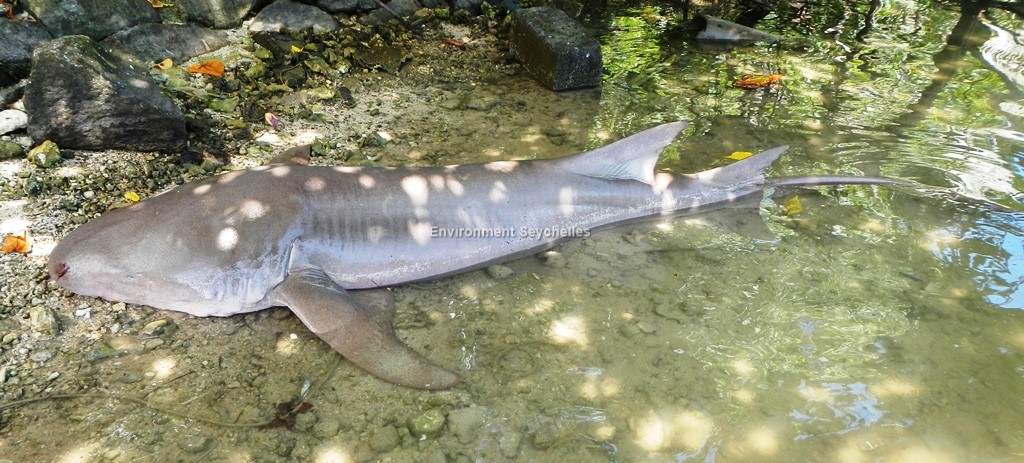Description:
A large, rough skinned sand brown nurse shark (colour brown, from tan to rufous or yellowish to dark grey-brown according to habitat, and slowly changeable by the individual).
First posteriorly positioned dorsal fin, large second dorsal and long upper caudal fin (more than 25% TL) give distinctive lateral view. Blunt angular snout with small mouth,
with prominent barbels, positioned anterior to lateral eyes. Small comb-like teeth. Spiracles much smaller than eye.
Size:
Maturity: males about 225cm, females about 230cm TL. Max Length: 320 cm TL.
Habitat and Ecology:
Inhabits insular and continental shelves from the intertidal zone down to at least 70m – typically 5-30m depth. Occurring on or near the bottom in lagoons, channels and
along outer reef edges of coral and adjacent sandy areas. Prefers crevices and caves on reefs but may be found hiding in more exposed areas. Juveniles more likely to occur
in crevices in shallow lagoons, adults more wide ranging though likely to return to favoured locations. Forms resting aggregations.
Feeds on reef teleosts, cephalopods, crustaceans and sea urchins. Mainly nocturnal, sucks prey out of crevices with its muscular pharynx.
Ovoviviparous. 4 or more young are born per litter. There is no embryonic nourishment from the placental structure within the mother's uterus; the embryos feed off yolk
contained within the egg case in which it grows. It appears that the tawny nurse shark practices oophagy on relatively large, cased nutritive eggs.
Fishery Status:
This species is not protected or subject to fishery regulations. It is however illegal to fish for sharks with nets (Fisheries Act, Reg 16.c). It is caught on handlines and on baited lines such as the local anchored long line “drag”. Juveniles can be caught in traps. In Seychelles N. ferrugineus is considered to have a poor quality meat and hence though often caught, it is typically released. There is a seasonal
fishery for it however around Praslin.
It is known to break traditional fish traps, presumably having entered to feed on trapped reef fish, and may often be killed when thus caught to prevent it damaging more
traps.
Notes:
References:
Ebert, D.A. et al (2013). Sharks of the World – A fully illustrated guide. Wild Nature press ISBN 978-0-9573946-0-5
Froese, R. & D. Pauly. Eds. (2018). FishBase. https://www.fishbase.de/summary/Nebrius-ferrugineus (19/08/18).
Florida Museum (2018). Nebrius ferrugineus. https://www.floridamuseum.ufl.edu/fish/discover/species-profiles/nebrius-ferrugineus/ (19/08/18).
Nevill, J.E.G. et al (2015). An identification guide for the sharks of the Seychelles Artisanal Fishery.
Simpfendorfer, C. et al 2021. Nebrius ferrugineus. The IUCN Red List 2021: e.T41835A173437098. https://dx.doi.org/10.2305/IUCN.UK.2021-2.RLTS.T41835A173437098.en. (23/09/21).
UNFAO (2018). Nebrius ferrugineus. http://www.fao.org/fishery/species/13671/en (19/08/18).
Citation:
Nevill, J.E.G. (2019). Nebrius ferrugineus, Tawny nurse shark. Seychelles Seatizens. www.seatizens.sc. https://seatizens.sc/species/nebrius-ferrugineus-lesson-1831/ (Updated 27/09/21).



